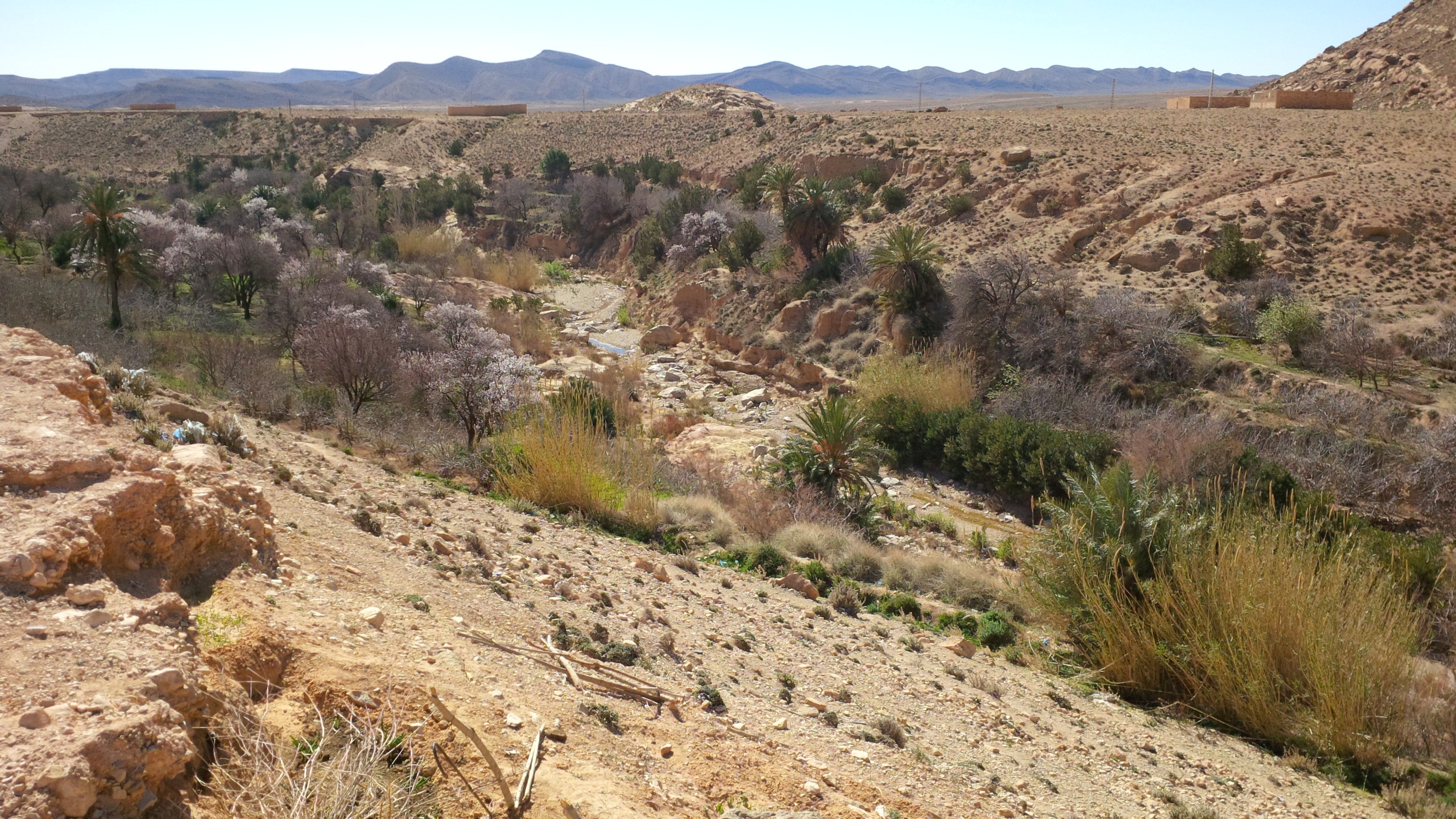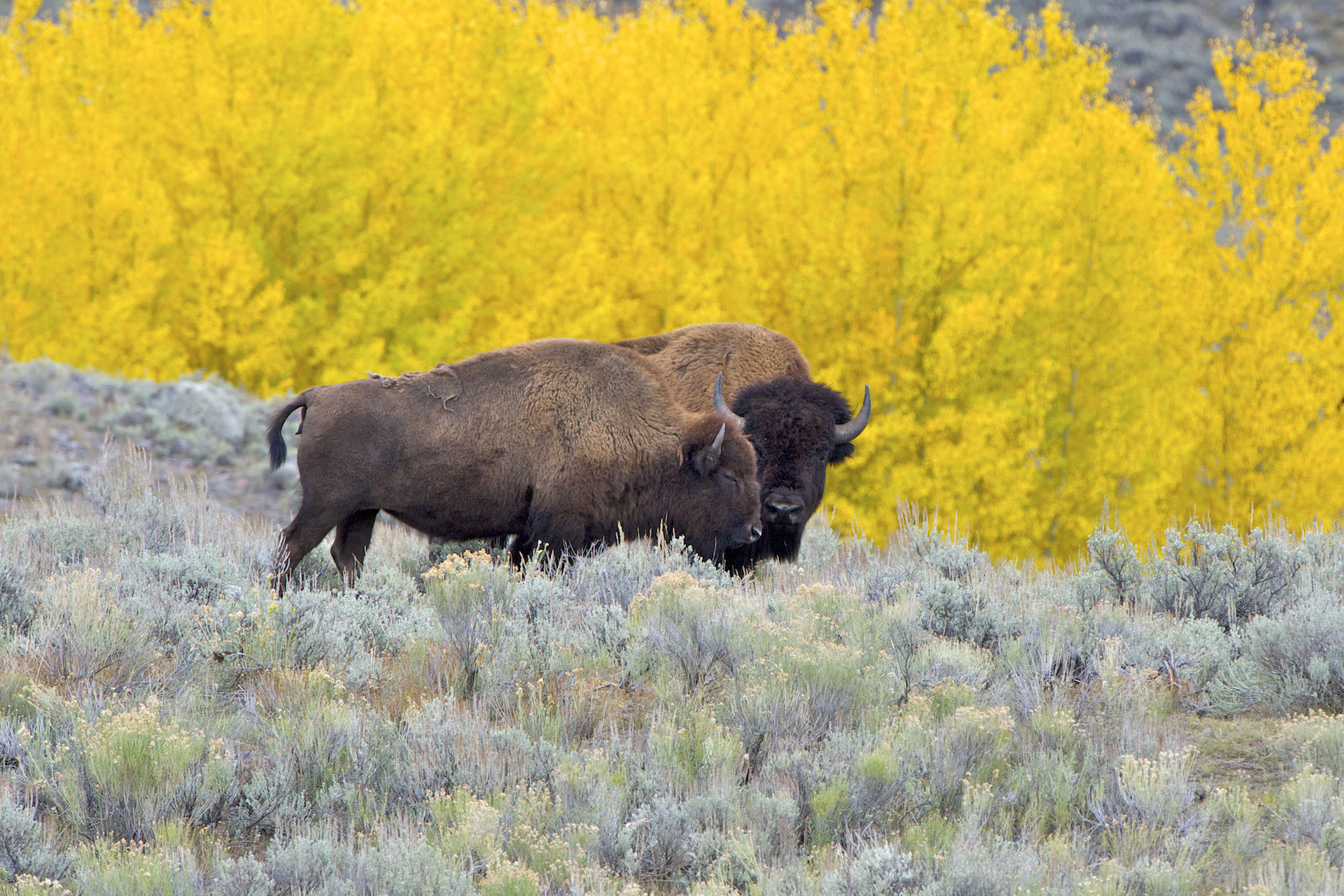|
Overgrazing
Overgrazing occurs when plants are exposed to intensive grazing for extended periods of time, or without sufficient recovery periods. It can be caused by either livestock in poorly managed agricultural applications, game reserves, or nature reserves. It can also be caused by immobile, travel restricted populations of native or non-native wild animals. Overgrazing reduces the usefulness, productivity and biodiversity of the land and is one cause of desertification and erosion. Overgrazing is also seen as a cause of the spread of invasive species of non-native plants and of weeds. Degrading land, emissions from animal agriculture and reducing the biomass in a ecosystem contribute directly to climate change between grazing events. Successful planned grazing strategies have been in support of the American bison of the Great Plains, or migratory wildebeest of the African savannas, or by holistic planned grazing. [...More Info...] [...Related Items...] OR: [Wikipedia] [Google] [Baidu] |
Desertification
Desertification is a type of gradual land degradation of Soil fertility, fertile land into arid desert due to a combination of natural processes and human activities. The immediate cause of desertification is the loss of most vegetation. This is driven by a number of factors, alone or in combination, such as drought, climatic shifts, tillage for agriculture, overgrazing and deforestation for fuel or construction materials. Though vegetation plays a major role in determining the Soil biology, biological composition of the soil, studies have shown that, in many environments, the rate of erosion and runoff decreases exponentially with increased vegetation cover. Unprotected, dry soil surfaces blow away with the wind or are washed away by flash floods, leaving infertile lower soil layers that bake in the sun and become an unproductive hardpan. At least 90% of the inhabitants of drylands live in Developing country, developing countries, where they also suffer from poor economic and s ... [...More Info...] [...Related Items...] OR: [Wikipedia] [Google] [Baidu] |
Grazing
In agriculture, grazing is a method of animal husbandry whereby domestic livestock are allowed outdoors to free range (roam around) and consume wild vegetations in order to feed conversion ratio, convert the otherwise indigestible (by human digestive system, human gut) cellulose within grass and other forages into meat, milk, wool and other animal products, often on land that is unsuitable for arable farming. Farmers may employ many different strategies of grazing for crop yield, optimum production: grazing may be continuous, seasonal, or rotational grazing, rotational within a grazing period. Longer rotations are found in ley farming, alternating arable and fodder crops; in rest rotation, deferred rotation, and mob grazing, giving grasses a longer time to recover or leaving land fallow. Patch-burn sets up a rotation of fresh grass after burning with two years of rest. Conservation grazing proposes to use grazing animals to improve the biodiversity of a site. Grazing has existed ... [...More Info...] [...Related Items...] OR: [Wikipedia] [Google] [Baidu] |
Deserts And Xeric Shrublands
Deserts and xeric shrublands are a biome defined by the World Wide Fund for Nature. Deserts and xeric (Ancient Greek 'dry') shrublands form the largest terrestrial biome, covering 19% of Earth's land surface area. Ecoregions in this habitat type vary greatly in the amount of annual rainfall they receive, usually less than annually except in the margins. Generally evaporation exceeds rainfall in these ecoregions. Temperature variability is also diverse in these lands. Many deserts, such as the Sahara Desert, Sahara, are hot year-round, but others, such as East Asia's Gobi Desert, become quite cold during the winter. Temperature extremes are a characteristic of most deserts. High daytime temperatures give way to cold nights because there is no insulation provided by humidity and cloud cover. The diversity of climatic conditions, though quite harsh, supports a rich array of habitats. Many of these habitats are ephemeral in nature, reflecting the paucity and seasonality of avail ... [...More Info...] [...Related Items...] OR: [Wikipedia] [Google] [Baidu] |
Holistic Management (agriculture)
In agriculture, holistic management (from ''holos'', a Ancient Greek, Greek word meaning "all, whole, entire, total") is an approach to managing resources that was originally developed by Allan Savory for grazing management. Holistic management has been likened to "a permaculture approach to rangeland management". Holistic management is a registered trademark of Holistic Management International (no longer associated with Allan Savory). It has faced criticism from many researchers who argue it is unable to provide the benefits claimed. Definition "Holistic management" describes a systems thinking approach to managing resources. Originally developed by Allan Savory, it is now being adapted for use in managing other systems with complex social, ecological and economic factors. Holistic planned grazing is similar to rotational grazing but differs in that it more explicitly recognizes and provides a framework for adapting to the four basic ecosystem processes: the water cycle, the ... [...More Info...] [...Related Items...] OR: [Wikipedia] [Google] [Baidu] |
Soil Erosion
Soil erosion is the denudation or wearing away of the Topsoil, upper layer of soil. It is a form of soil degradation. This natural process is caused by the dynamic activity of erosive agents, that is, water, ice (glaciers), snow, Atmosphere of Earth, air (wind), plants, and animals (including humans). In accordance with these agents, erosion is sometimes divided into water erosion, glacial erosion, snow erosion, Aeolian erosion, wind (aeolian) erosion, Zoogenic erosion, zoogenic erosion and anthropogenic erosion such as tillage erosion. Soil erosion may be a slow process that continues relatively unnoticed, or it may occur at an alarming rate causing a serious loss of topsoil. The loss of soil from Agricultural land, farmland may be reflected in reduced crop production potential, lower surface water quality and damaged drainage networks. Soil erosion could also cause sinkholes. Human activities have increased by 10–50 times the rate at which erosion is occurring world-wide. Exc ... [...More Info...] [...Related Items...] OR: [Wikipedia] [Google] [Baidu] |
Agriculture
Agriculture encompasses crop and livestock production, aquaculture, and forestry for food and non-food products. Agriculture was a key factor in the rise of sedentary human civilization, whereby farming of domesticated species created food surpluses that enabled people to live in the cities. While humans started gathering grains at least 105,000 years ago, nascent farmers only began planting them around 11,500 years ago. Sheep, goats, pigs, and cattle were domesticated around 10,000 years ago. Plants were independently cultivated in at least 11 regions of the world. In the 20th century, industrial agriculture based on large-scale monocultures came to dominate agricultural output. , small farms produce about one-third of the world's food, but large farms are prevalent. The largest 1% of farms in the world are greater than and operate more than 70% of the world's farmland. Nearly 40% of agricultural land is found on farms larger than . However, five of every six farm ... [...More Info...] [...Related Items...] OR: [Wikipedia] [Google] [Baidu] |
Savanna
A savanna or savannah is a mixed woodland-grassland (i.e. grassy woodland) biome and ecosystem characterised by the trees being sufficiently widely spaced so that the canopy does not close. The open canopy allows sufficient light to reach the ground to support an unbroken herbaceous layer consisting primarily of grasses. Four savanna forms exist; ''savanna woodland'' where trees and shrubs form a light canopy, ''tree savanna'' with scattered trees and shrubs, ''shrub savanna'' with distributed shrubs, and ''grass savanna'' where trees and shrubs are mostly nonexistent.Smith, Jeremy M.B.. "savanna". Encyclopedia Britannica, 5 Sep. 2016, https://www.britannica.com/science/savanna/Environment. Accessed 17 September 2022. Savannas maintain an open canopy despite a high tree density. It is often believed that savannas feature widely spaced, scattered trees. However, in many savannas, tree densities are higher and trees are more regularly spaced than in forests.Manoel Cláudio da ... [...More Info...] [...Related Items...] OR: [Wikipedia] [Google] [Baidu] |
Great Plains
The Great Plains is a broad expanse of plain, flatland in North America. The region stretches east of the Rocky Mountains, much of it covered in prairie, steppe, and grassland. They are the western part of the Interior Plains, which include the mixed grass prairie, the tallgrass prairie between the Great Lakes and Appalachian Plateau, and the Taiga Plains Ecozone, Taiga Plains and Boreal Plains Ecozone, Boreal Plains ecozones in Northern Canada. "Great Plains", or Western Plains, is also the ecoregion of the Great Plains or the western portion of the Great Plains, some of which in the farthest west is known as the High Plains. The Great Plains lie across both the Central United States and Western Canada, encompassing: *Most or all of the U.S. states of Kansas, Nebraska, and North Dakota, North and South Dakota; *Eastern parts of the U.S. states of Colorado, Montana, and Wyoming; *Parts of the U.S. states of New Mexico, Oklahoma, Texas; *Sometimes western parts of Iowa, Minnesot ... [...More Info...] [...Related Items...] OR: [Wikipedia] [Google] [Baidu] |
Environmental Impact Of Agriculture
The environmental impact of agriculture is the effect that different farming practices have on the ecosystems around them, and how those effects can be traced back to those practices. The environmental impact of agriculture varies widely based on practices employed by farmers and by the scale of practice. Farming communities that try to reduce environmental impacts through modifying their practices will adopt sustainable agriculture practices. The negative impact of agriculture is an old issue that remains a concern even as experts design innovative means to reduce destruction and enhance eco-efficiency. Animal agriculture practices tend to be more environmentally destructive than agricultural practices focused on fruits, vegetables and other biomass. The emissions of ammonia from cattle waste continue to raise concerns over environmental pollution. When evaluating environmental impact, experts use two types of indicators: "means-based", which is based on the farmer's production m ... [...More Info...] [...Related Items...] OR: [Wikipedia] [Google] [Baidu] |
American Bison
The American bison (''Bison bison''; : ''bison''), commonly known as the American buffalo, or simply buffalo (not to be confused with Bubalina, true buffalo), is a species of bison that is endemic species, endemic (or native) to North America. It is one of two extant species of bison, along with the European bison. Its habitat, historical range ''circa'' 9000 BC is referred to as the great bison belt, a tract of rich grassland spanning from Alaska south to the Gulf of Mexico, and east to the Atlantic Seaboard (nearly to the Atlantic tidewater (geographic term), tidewater in some areas), as far north as New York (state), New York, south to Georgia (U.S. state), Georgia, and according to some sources, further south to northern Florida, with sightings in North Carolina near Buffalo Ford on the Catawba River as late as 1750. Two subspecies or ecotypes have been described: the plains bison (''B. b. bison''), smaller and with a more rounded hump; and the wood bison (''B. b. athabascae ... [...More Info...] [...Related Items...] OR: [Wikipedia] [Google] [Baidu] |
Keystone Species
A keystone species is a species that has a disproportionately large effect on its natural environment relative to its abundance. The concept was introduced in 1969 by the zoologist Robert T. Paine. Keystone species play a critical role in maintaining the structure of an ecological community, affecting many other organisms in an ecosystem and helping to determine the types and numbers of various other species in the community. Without keystone species, the ecosystem would be dramatically different or cease to exist altogether. Some keystone species, such as the wolf and lion, are also apex predators. The role that a keystone species plays in its ecosystem is analogous to the role of a keystone in an arch. While the keystone is under the least pressure of any of the stones in an arch, the arch still collapses without it. Similarly, an ecosystem may experience a dramatic shift if a keystone species is removed, even though that species was a small part of the ecosystem by measur ... [...More Info...] [...Related Items...] OR: [Wikipedia] [Google] [Baidu] |







